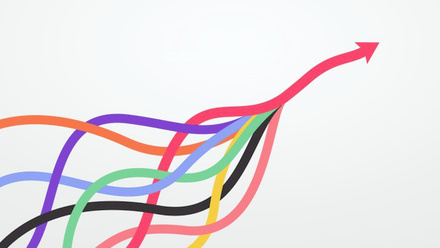How to ease the effects of ageing workers on insurance costs
The term ‘ageing workforce’ is being used more regularly these days and is likely to be used more in the years ahead as the population grows and thoughts on retirement change.
For example, the pandemic altered the face of the NHS, with newly retired medical professionals returning to work to help their colleagues during an unprecedented crisis. Three years on, and with the number of vacancies still growing, the focus has shifted to actively persuading retirees back to work, as highlighted in the recent Budget.
The health service is not the only sector trying to re-hire older workers to help fill their staff shortages and the ongoing cost-of-living crisis is likely to be convincing more people to return to work in older age.
As a result, looking after older employees’ health has never been so important. Private medical insurance (PMI) is becoming more of a necessity rather than a ‘nice to have’ to keep employees healthy and able to work.
One of the common barriers of providing PMI to an older workforce is cost. It seems counterintuitive given the focus on preventing age discrimination. But it is an unfortunate fact that the older you are, the more likely you are to need complex medical help, and the more complex the condition, the more expensive it will be to treat.
However, there are ways you can manage the cost of PMI for this employee population.
1 Understand your company demographic
It’s vital to understand the healthcare needs of your workforce. Do you have a grasp of how different age groups have different needs? How healthy are your employees? Understanding this is key to developing plans to meet your employees’ exacting needs from PMI, no matter their life stage.
A wellbeing survey that asks a range of questions about both physical and mental health can give a fuller picture of a workforce’s needs.
2. Early intervention
The key to managing the cost of treating any condition is to catch it early. Most group risk and healthcare protection providers offer a degree of early intervention benefits attached to their products, whether via an Employee Assistance Programme, a Virtual GP, fitness and diet advice or a general healthcare app.
These value-added benefits normally come at no additional cost, but their impact is wide reaching, especially with an ageing workforce. What’s more, using these can save treatment costs that would normally be paid under the PMI.
An absence management tool is another way to help with early intervention. This system can provide HR with regular anonymised management information, providing a detailed insight into the health of employees – data that could help mould your PMI plan to suit your employees.
Many providers now also offer management training. For a condition such as stress or burnout in the workplace, line managers are in a unique position to be able to identify a potential long-term absentee before it happens. With the right guidance and support they may be able to prevent the situation from escalating.
3. Limiting PMI benefits
Another question to consider is whether the PMI plan does what the company needs it to. PMI is the one insurance that will be subject to a double-digit increase year-on-year if it is being well used by employees. However, this is simply unsustainable in the long term. One way round this would be to manage benefit levels, including excesses and/or underwriting.
Limiting hospital access is another option. Costs can differ wildly across the UK – a hip replacement can cost between £9,000 and £15,000 depending on where the operation is carried out. Many people also research hospitals before making a decision, potentially seeking out expensive hospitals further afield than is necessary. By restricting cover to particular hospitals, within a reasonable proximity to your offices, you can help limit the claims liability, while ensuring members have access to the treatment they need.
4. Benefit tiering
If restricting benefits is not an option, consider benefit tiering. The company VIPs could have their own benefit level at the top, receiving comprehensive PMI cover, while a newly qualified graduate coming into the business may, for example, be offered a lower level of cover after two years’ service.
This arrangement, in theory at least, weights expenses towards older age groups, who will in general need more cover than those just starting out on their careers. As these entry level employees move up the hierarchy, they will gradually gain more cover as they age.
An alternative option would be to offer access to a limited-cover discretionary medical plan which could provide a more cost-effective solution.
These steps can help mitigate the ever-rising costs of PMI as the UK workforce ages. By making smart savings in certain places, and making sure your cover is fit for purpose, companies can avoid needlessly high premiums, while still providing the cover their workforce needs to stay health and productive.
With contributions by Louise Low, senior health and risk consultant at Barnett Waddingham.
Supplied by REBA Associate Member, Barnett Waddingham
Barnett Waddingham is proud to be a leading independent UK professional services consultancy at the forefront of risk, pensions, investment, and insurance. We work to deliver on our promise to ensure the highest levels of trust, integrity and quality through our purpose and behaviours.








